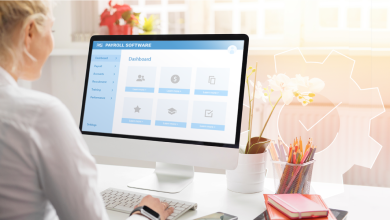Unlocking the Voice of Your Customer: Powerful Feedback Tools for Actionable Insights

Key Takeaways:
- Understanding various feedback tool capabilities and methodologies.
- Best practices for collecting and utilizing customer feedback.
- The role of anonymized data in enhancing customer experience.
- How real-time feedback can lead to immediate improvements.
- Integrating feedback within a comprehensive strategy for business growth.
Unlocking the voice of your customer is essential for gaining actionable insights that drive business success. Fortunately, powerful feedback tools help businesses collect, analyze, and act upon customer feedback effectively.
One such tool is surveys, which allow businesses to gather structured customer feedback on various aspects of their experience, such as product satisfaction, service quality, and overall brand perception. Surveys can be distributed via email, website pop-ups, or social media platforms, giving businesses valuable insights into customer preferences and sentiments.
Another feedback tool is online reviews and rating platforms, where customers share their opinions and experiences with a broader audience. Monitoring online reviews and ratings allows businesses to identify trends, address customer concerns, and capitalize on positive feedback to enhance their reputation and attract new customers.
Social media listening tools enable businesses to monitor conversations about their brand, products, or industry across social media platforms. By tracking mentions, hashtags, and keywords, companies can gain real-time insights into customer sentiment, identify emerging trends, and engage with customers directly to address concerns or provide assistance.
In a market where customer-centricity has become the bedrock of successful business strategies, harnessing the power of customer feedback software becomes imperative. These tools bridge the gap between customer expectations and business offerings, providing insights integral to enhancing the user experience and fostering sustainable growth.
Exploring Feedback Tool Features That Drive Insight
The advancement in feedback tools is evident in their multifaceted features. Beyond simple questionnaires, these platforms support intricate survey logic that personalizes the user experience, embedded analytics that provides real-time insights, and automation that triggers actions based on specific responses. The complexity of feedback mechanisms can range from gauging net promoter scores to curating extensive customer journey maps. The features of these tools are designed not just for collection but also to deliver actionable insights that propel businesses forward.
Best Practices in Customer Feedback Collection
There is an art and science to extracting high-quality feedback from customers. It starts with formulating questions that are direct, clear, and unbiased. Ensuring anonymity can also significantly enhance the volume and openness of responses. Timing is equally crucial; soliciting feedback post-interaction captures the customer’s experience when fresh in their mind, leading to more prosperous, more genuine insights. Closing the loop with customers and demonstrating that their feedback has resulted in concrete changes are also mandated by best practices.
The Significance of Anonymity in Feedback Surveys
The promise of confidentiality can empower customers to share their unfiltered opinions. This is critical as businesses seek objective truth rather than sugarcoated niceties. When customers don’t have to worry about the potential backlash of their honesty, they are more likely to provide authentic, invaluable feedback that can highlight issues needing immediate attention or opportunities for improvement that might otherwise stay hidden.
It is impossible to overestimate the importance of anonymity in feedback surveys because it is essential to getting participants to answer honestly. Respondents are more inclined to offer sincere ideas, opinions, and criticisms without fear of retaliation or condemnation when they are assured that their input will stay anonymous. This anonymity fosters a sense of trust and psychological safety, encouraging respondents to express their true thoughts and feelings openly.
Moreover, anonymity in feedback surveys helps mitigate bias and social desirability effects, which can skew responses and lead to inaccurate data. When respondents are assured of anonymity, they are less likely to provide socially desirable answers or withhold negative feedback, resulting in more accurate and actionable insights for businesses.
Leveraging Real-Time Customer Feedback for Instant Action
The immediacy of digital interactions means that delays in responding to customer feedback can result in missed opportunities for engagement and resolution. Tools that enable real-time feedback processes offer potent ways to act swiftly on customer sentiments and resolve issues before they escalate. This proactive approach to feedback handling can significantly improve customer satisfaction and act as a preventative measure for negative customer experiences.
Integrating Customer Feedback into Business Strategies
While collecting feedback is a great starting point, integrating this information into the broader business strategy is where real transformation happens. This could involve adjusting product features, refining customer service protocols, or changing company policies to align with customer preferences and needs. A holistic approach to feedback integration ensures that every aspect of the customer’s voice becomes an integral part of the business’s roadmap for the future.
Overcoming Challenges in Feedback Interpretation and Management
The analysis of consumer feedback and the subsequent management of that data presents one of the significant issues for firms dealing with customer feedback. While collecting voluminous feedback can be beneficial, it can also be daunting. Companies must establish efficient systems to categorize and prioritize input effectively. By doing so, businesses can avoid getting bogged down in the minutiae and focus on the feedback that will significantly impact business decisions and customer satisfaction.
Harnessing Advanced Analytics for Deeper Understanding of Customer Feedback
In the age of big data, advanced analytics capabilities have become a cornerstone of interpreting customer feedback. Analytical tools can dissect large volumes of data to uncover trends, track customer satisfaction, and monitor performance against key service metrics. Sophisticated algorithms and artificial intelligence can further augment this analysis, synthesizing the information to understand customer preferences and behaviors comprehensively. This level of insight allows businesses to make informed and strategic decisions that cater directly to consumer demands and market trends.




